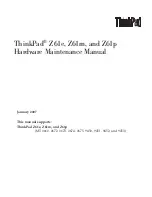
Q01PEQOT1,2,1
Query current type setting of
parametric EQ on output B , band
1.
Q01PEQOTB,1,t
, where
t
is the current
setting of the type parameter for the
parametric EQ on output B , band 1. If the
type parameter of this filter is set to the same
value given in the example above, then the
status message will be
Q01PEQOTB,1,1
.
8.96.
PHANTOM
-- Enable Phantom Power on Input 1
This command sets or queries the status of phantom power on microphone input 1.
This command is a channel boolean command. See
Section 6.3
and
Section 6.1
for more information
on this type of command.
This command is saved to non-volatile memory only as part of a preset. The state of this command
will be restored after power-up only if a preset is saved and that preset is set to be the power-on
preset.
Example
Description
Status Message
Q01PHANTOM11
Enable phantom power for input
channel 1.
Q01PHANTOM11
Q01PHANTOM10
Disable phantom power for input
channel 1.
Q01PHANTOM10
Q01PHANTOM12
Toggle phantom power state for
input channel 1.
Q01PHANTOM1x
, where
x
is
0
or
1
depending
on the current state of phantom power on
input channel 1.
Q01PHANTOM1?
Query state of phantom power for
input channel 1.
Q01PHANTOM1x
, where
x
is
0
or
1
depending
on the current state of phantom power on
input channel 1.
8.97.
PING
-- See Which Devices Are Present
When any Vortex device receives this command, it responds with a
PONG
status message. This is
typically used by the host program to determine the types and IDs of all linked devices. When used in
this manner, wildcard characters are usually given for the device type and ID so that all connected
devices will respond.
In the following example, it is assumed that there are two EF2280's (device IDs 0 and 1), two
EF2241's (device IDs 2 and 3), two EF2211's (device IDs 4 and 5), two EF2210's (device ID's 6 and
7), and two EF2201's (device ID's 0 and 1) linked together via EF Bus.
Example Description
Status Message












































